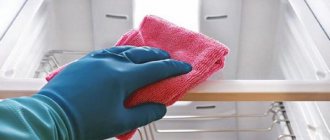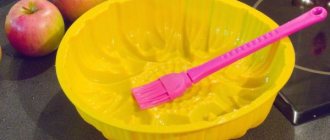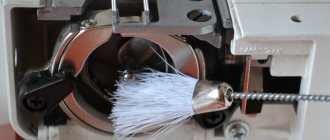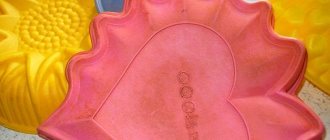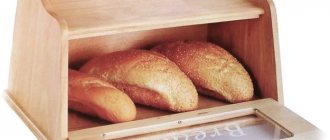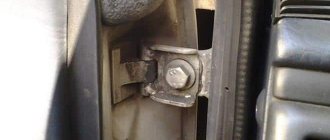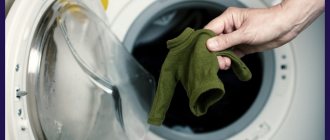How to properly use a sewing machine
In addition to the basic rules for working with fabrics, needles and threads, described in the instructions for each sewing machine model, it is necessary to regularly clean and lubricate the complex mechanism.
Care can be divided into:
- independent – carried out at least once a month during active use;
- professional - it is recommended to do it once every 2-3 years in a repair shop.
Proper storage of the device is also considered an important criterion for the safety of metal components if it is rarely used.
How to properly lubricate and clean a sewing machine
Almost all sewing machines - from the old manual "Chaika" to the multi-tasking electronic Janome - need to be periodically lubricated to prevent moving parts from becoming deformed due to friction and pressure. If you do this correctly and in a timely manner, the equipment will last a long time and will not make any extraneous sounds.
Sometimes the device does not return to normal operation even after lubricating the mechanics. If you don't know how to clean and lubricate your sewing machine, turn to a professional. The service provides high-quality repairs of sewing machines at home in Moscow and the Moscow region. Opening hours: from 8:00 to 23:00, without weekends and holidays. If the application is left before 12:00, the technician will arrive on the same day. You can arrange services by calling 8(495)213-18-17 or online.
Specific breakdowns
The following symptoms indicate the need to properly clean the unit and lubricate it:
- Skip stitches;
- Strange sounds: grinding, squeaking or rattling;
- There was a smell of hot metal;
- The device vibrates strongly;
- The lower thread constantly gets tangled in the shuttle sleeve;
- The needle deforms the fabric.
If, when starting to sew, you notice at least two of these six points at the same time, it means that your device urgently needs to be lubricated with oil, having first removed the dirt from it.
Cleaning and lubricating different types of sewing devices
Despite the fact that manual, automatic and miniature (children's) cars have significant design differences, the cleaning process for all these types of devices will generally be the same. The technical features of caring for each of these types will be described below.
Manually operated machines contain more moving metal parts such as rollers, gears and springs. Accordingly, cleaning and lubricating such machines is more difficult and takes longer (this is especially true for industrial models).
For automation, a different rule applies - the oil should not come into contact with the wiring to avoid fire or short circuit.
Primitive plastic models for children must be lubricated so that oil does not get onto the surface of the body and then into the eyes and mouth. By the way, the need to process the insides of such devices arises extremely rarely.
Tools
Before figuring out how to lubricate a sewing machine, you need to decide on your working tools. For complete cleaning and subsequent application of lubricant, you will need the following equipment:
- Syringe or oil can;
- Lint-free cloth;
- A brush with hard bristles (on the other end there is a brush);
- Oilcloth;
- Tweezers;
- Screwdriver;
- WD-40 or standard machine oil.
All these things (except for cleaning materials) should be included with the sewing machine; most often the complete set is found in Brother and Jaguar. But even if something is not included in the kit, the necessary tool can be purchased at any hardware store or the corresponding department of the supermarket.
What to lubricate with?
The main characteristic of engine oil is its viscosity index (indicated on the front side of the container). Oil that is too thick will not flow into small grooves and holes, where the most intense friction occurs. If the oil is too liquid, it will simply flow down and not only will not prevent friction, but will also cause rapid clogging of the shuttle compartment (especially if the shuttle is vertical). Therefore, it makes sense to choose an oil of medium viscosity.
Remember: the most effective oil is the one that originally came with the device. If you don’t have it, don’t save money - choose oil, the price of which starts at 200 rubles. You cannot use automotive or cooking oil to treat the inside of a sewing machine, as it can cause rapid clogging and even deformation of the equipment.
If you don’t want to study the market, experts recommend using the famous WD-40: this universal lubricant is securely attached to any surface and provides 100% protection from moisture.
How often to lubricate?
With average work intensity (2-4 sewing sessions per week), the new electronic Astrolux will need to be lubricated once every six months, the old manual Podolsk - once every three months. In any case, you must constantly listen to your device, check the instructions and monitor the smooth movement of the needle and controls.
Lubrication: step-by-step instructions
Regardless of what kind of machine you are going to lubricate - manual, electric or children's, the main objects of work will be the shuttle, the moving elements surrounding it, as well as all the metal “joints”.
- Turn off the power to the device and place it on an oilcloth.
- Remove the housing.
- Use a brush to clean areas where dust and lint have accumulated.
- Clean the mechanics of old oil.
- Take the oil into a syringe/oiler and carefully apply it to the moving metal parts of the structure. For any joint, 1-2 drops of oil are enough. Avoid indiscriminate splashing.
- Wipe off excess with a tissue.
- Return the housing to its place. Make sure everything is installed correctly.
- Turn on the device and make a couple of test stitches.
This responsible and delicate procedure can take quite a long time, especially for the first time. If you are not confident in your abilities, it makes sense to call a professional to carry out a professional examination and repair at home.
Self care
It is necessary to prepare specialized oil for lubricating sewing machines (it is made on a kerosene basis, so it penetrates perfectly into all components), a small screwdriver (Phillips or flat-head), a brush to collect dust or fiber residues, a soft piece of fabric for small debris and old technical oil.
Sequence for vertical shuttle
- Remove the bobbin case, remove the latches, remove the retaining ring and the hook base.
- Clean all the grooves, as well as the carriage, with a brush, then remove any remaining old grease with a soft cloth.
- Drip oil onto the landing stage, under the pusher, onto the edge of the shuttle itself.
- Insert the hook, apply oil to the top of the housing before placing the retaining ring.
- Be sure to lubricate the spool holder axle. You can then close the latches and place the bobbin case in place.
- After lubrication, it is necessary to make several revolutions with the flywheel.
Horizontal hook lubrication
Despite the assurances of some sellers that horizontal structures do not require maintenance, professional sewing machine technicians consider lubrication mandatory.
Steps:
- Remove the protective window and needle plate.
- Take out the bobbin insert, clean all surfaces with a brush, and use a cloth to remove any remaining oil from the step where the hook mesh comes into contact with the bobbin holder.
- Fresh oil drips onto the metal landing stage and also into the center of the bearing.
- When assembling the bobbin insert, you need to check the correct fit. When the wheel moves, it must remain in place. Next, the needle plate is installed (secured with screws).
Cleaning the needle bar
Access to the needle movement mechanism can be provided by opening the cover on the top of the case (horizontal shuttles) or by unscrewing the screw and removing the panel on more budget models.
The importance of lubricating the needle bar is justified by the fact that dry movement of the mechanism can create backlash, loosen the needle and lead to poor stitch quality.
The needle bar is lubricated along its entire length, capturing the bushings and fasteners. Afterwards, you need to spin the flywheel to see which connecting rods provide its movement. They also need to be cleaned of debris, followed by application of lubricant.
Cleaning and lubricating your Janome sewing machine
Let's look at the process of disassembling, cleaning parts from dust accumulations and lubricating a Janome home sewing machine.
What you need for work
To carry out the procedure, you will need to stock up on a certain set of tools and materials.
- Use a lint-free cloth; any cotton rag will work just fine.
- Brush with hard bristles. Usually a toothbrush is used for these purposes, but art brushes also do an excellent job.
- Oil for sewing machines.
- WD-40, you can ask at car stores. This is a special substance with which the moving part of any mechanism is usually lubricated. It is sold in aerosol form.
How to lubricate a home sewing machine in hard-to-reach places? Professionals usually use a 5 ml disposable syringe, which can be purchased at any pharmacy. Its needle allows you to penetrate into the smallest holes and dispense oil.
Step-by-step algorithm
Let's proceed directly to the procedure.
- Unplug the device from the outlet and remove the needle from the mount - this will protect you from accidental injuries while working. After this, look for the screw on the front of the case; it is usually hidden under a decorative plug.
- Remove the plug and unscrew the screw using a screwdriver. Then you need to unscrew the fastening screws from the bar of the rack and pinion mechanism that performs the function of moving matter. The released plate must be pulled out and the space under it properly cleaned.
- The next step involves some hard work. It is necessary to remove dust from all connections that you can safely reach. Remove any old home sewing machine oil and apply a new coat. Carefully distribute the substance using an oil can. Two drops of oil will be enough for each connection. Blot the excess that flows down with a cloth and erase all traces left behind. To ensure even distribution of lubricants, rotate the drive wheel slowly.
- The next step is to release the shuttle fastening mechanisms and carefully pull it out of the socket. The operation is completely done manually; you will not need additional tools.
- Apply the required amount of lubricant to the roller. This part must rotate well so as not to interfere with the movements of the shuttle. Also carefully process the shaft attachment points. Some models may have felt and felt pads there, don’t be surprised and don’t rush to pull them out. These parts are designed to absorb any sewing machine oil that has leaked out of the unit.
- Check the functionality of the shuttle mechanism fastening clamps. They should move easily, not jam or create obstacles.
- Like the previous units, the carriage and the plate that secures it require your attention. Simply pull the part out and clean off the old oil and dust. After this, the carriage is lubricated with a thin layer of fresh lubricant and put in place.
- Underneath the fabric guide plate is usually where most of the dirt and dust accumulates. It gets there along with a piece of material that passes through the foot with the needle. Use a toothbrush and thoroughly clean out any debris that has accumulated while working. Pay special attention to rubbing parts - you must wipe off old deposits from them. How to lubricate our sewing machine in this place? Using a special oiler or syringe. In this segment, you need to be even more careful, because oil that has leaked into the wrong place will definitely end up on the threads, and then on the fabric of the product.
- Don't neglect the shuttle either. Thoroughly clean all its elements from dust. A dry, hard bristled paint brush can help with this. Do not use a damp cloth or wipes with cleaning solution as this may damage sensitive parts.
A substance called WD-40 will serve you well in all this work. It perfectly removes old sewing machine oil and dust accumulated in the joints of mechanisms.
The procedure for cleaning a sewing machine can take quite a long time. If you are not ready to spend it or are not confident in your skills, it is better to call a specialist. Errors during assembly and disassembly, as well as careless handling of small parts can lead to problems in the future.
Which oil to choose
Oil for such purposes has a special viscosity indicator. If it is too viscous and stringy, then the deep parts will not be lubricated properly, but they bear almost all the load. A composition that is too fluid will also not be useful, since it will not have time to penetrate deeper and will simply drain. This means that the lubricant for the sewing machine should be moderately viscous. Usually this parameter is directly indicated on the box and is recognized upon purchase. When working on a high-quality production machine, lubrication may not be necessary, since such units have an automatic lubrication system.
Regular medium viscosity oil
The best oil will be the one that came with it. If it is not there, you need to choose a better quality lubricant. You can find recommendations for choosing on the website of the manufacturer of this machine. Under no circumstances should you use vegetable oil: this can lead to serious damage and rapid contamination.
Toyota Power Fabriq
Lubrication Features
The biggest mistake is the idea that sewing machine oil needs to be applied in large quantities. In this situation, more does not mean better. During use, an impressive layer of dust accumulates on the internal parts of the device, which gets there along with the fabric. Over time, this may cause problems with the advancement of the canvas. In addition, deposits of dirt on moving elements create a serious load on the device drive. An excessive amount of oil, applied by the generous hand of an ignorant owner, accumulates tiny pieces of matter, scraps of thread, and dust. Falling into lumps, this mass accumulates in one place, causing problems with the sewing machine.
What is sewing machine oil?
Sewing machine oil is nothing more than a lubricant that reduces friction and wear on machine elements, covering them with a protective layer, thereby extending their service life. Thus, it is necessary for:
- reducing friction on rubbing elements;
- reducing wear of mechanisms;
- protecting and cleaning components and parts from dust;
- prevent rust.
Where the oil is located in the sewing machine, which parts need lubrication and how often they need to be lubricated are stated in the operating instructions that come with the sewing equipment.
The ingredients of sewing machine oil depend on the raw materials from which it is made. There are the following main groups of oils, differing in their raw materials, which are used to lubricate sewing machines:
- mineral (petroleum) oils - obtained by refining oil, resulting in the formation of a mixture of high-boiling carbons;
- synthetic oils - are produced through the synthesis of chemical elements, as a result of which the presence of mineral fats and solvents is excluded in their composition;
- semi-synthetic oils - are a mixture of petroleum and synthetic oils in a certain proportion.
How to choose a lubricant oil
Sewing machine oil has a viscosity index. By using too thick, you risk not lubricating the internal parts of the mechanisms, which account for the main friction. Taking a more fluid one, you can again be left with nothing, because it will simply flow down, and the mechanisms again will not receive lubricant. Lubricant for the average household sewing machine should have a medium viscosity. Usually this indicator is indicated directly on the label. It is worth noting that oil for industrial sewing machines is sometimes not needed at all: high-quality professional units are equipped with an automatic lubrication system.
Which oil is the best? The one that comes with the machine. If it was not there initially, then choose a special lubricant of only the best quality. Its cost can start from 100 rubles and more. It can be sold with a special oiler and in a simple plastic bottle.
Don’t even think about using car or vegetable oil - this is strictly prohibited, as it has a detrimental effect on the functioning of the entire system.
Experts do not recommend saving in this matter. Cheap oil may smell unpleasant, dry out quickly, or clump together. It is not recommended to store this oil for a long time after opening. You can use it only if nothing else is at hand.
Oil for Juki
The best oil for a sewing machine is the one that comes with it. That's why Juki sewing machine oil is sold with it. However, the same oil can be purchased separately or ordered through official representatives of the company.
Oil for a Bernina sewing machine, as well as oil for a Janome sewing machine, cannot be found on the open market. Therefore, if for some reason there is no “native” oil, you need to purchase a special oil for the sewing machine, which should be fluid and transparent. The types of oils and their properties have been described above.
The oil can or jar into which the oil is poured must also meet the quality requirements - good plastic without flaws, indicating the country of production. The oiler should be ergonomic.
To prevent dust and debris from getting into it, the lid or cap must be tightly closed. The tip of the oiler should be long enough and not too wide to reach hard-to-reach places. It is logical that the oiler should not be large, because it will be inconvenient to use.


